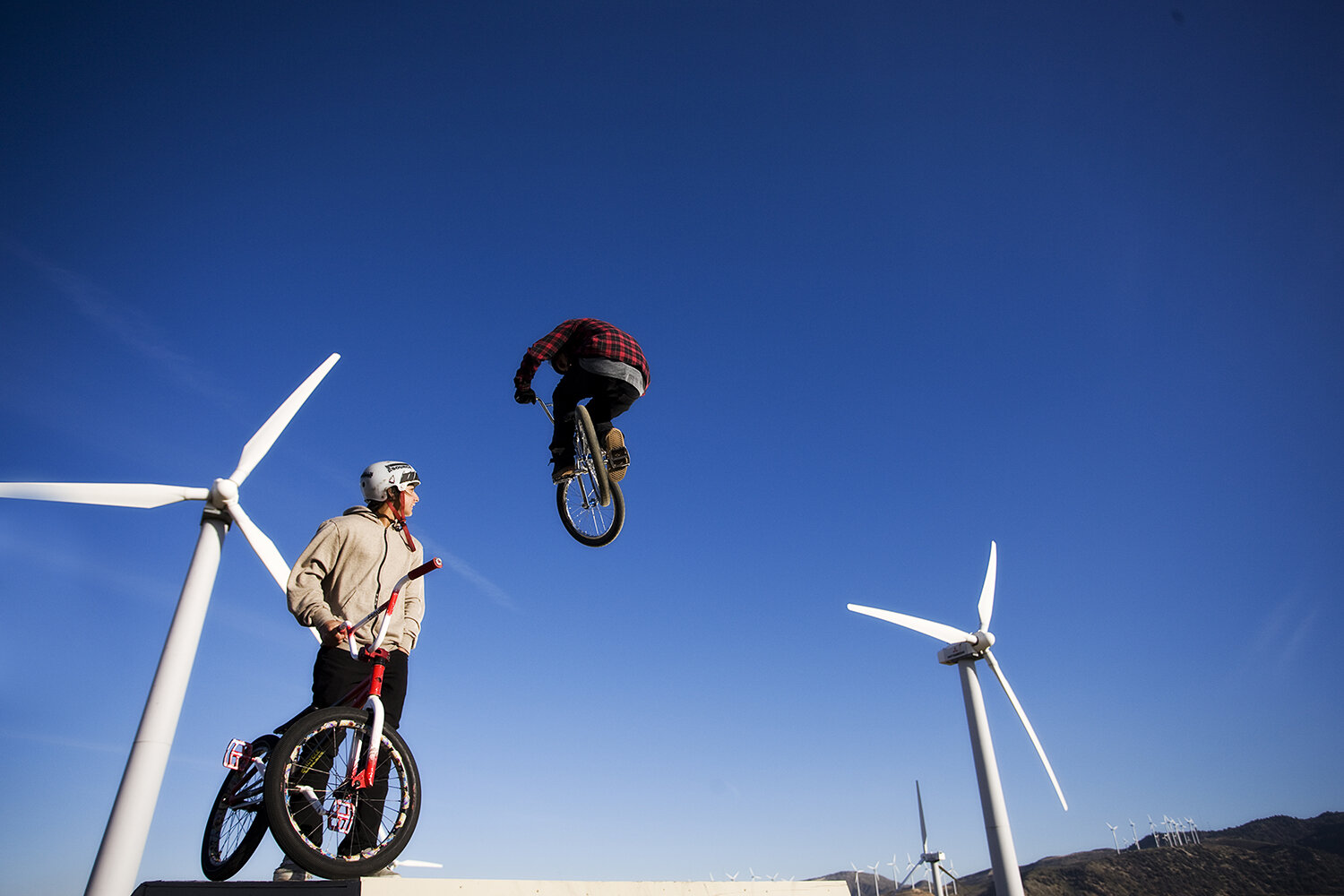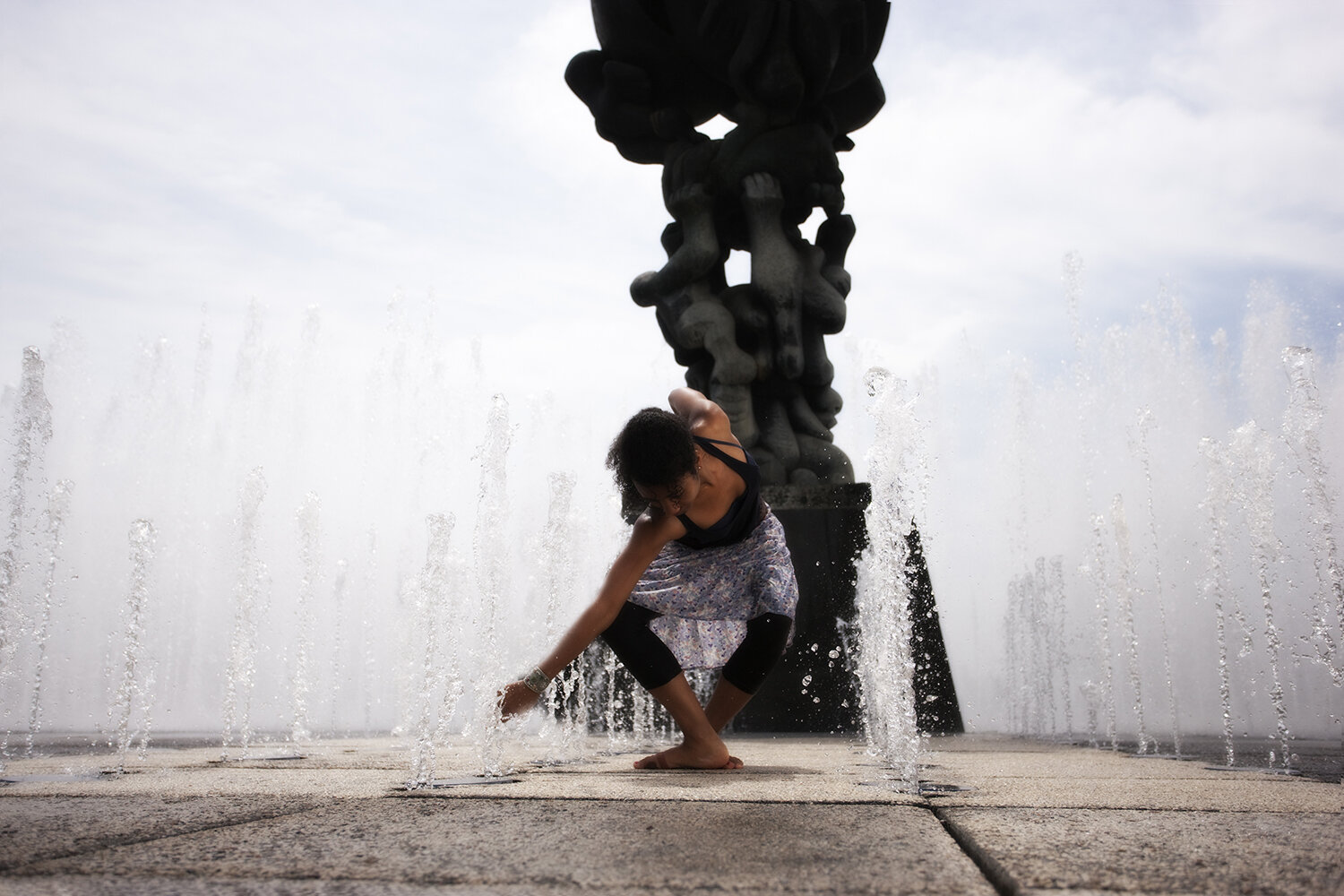The following post originally appeared on Production Hub.
Innovative Storytelling at its Best
Q: How did you first get involved in motion graphics and still photography?
A: I was in high school when I discovered my love for taking pictures, and first got serious about still photography. However, it wasn’t until after high school — when I was working room service at the local hotel — that I decided to do something about my passion. I quit my job and moved to Santa Barbara, California to attend Brooks Institute of Photography. My favorite projects at school involved sports, high speed action, innovative camera techniques and blowing things up. The industrial and high speed photography skill set that I developed at Brooks came in handy as I began my career in sports photography and motion.
Q: Can you name a few of your clients? What has been one of your favorite projects to date?
A: One of my favorite projects was contributing to Red Bull’s Signature Series. The promo was shot by Scott Duncan, but I did the supporting time-lapse shots. The best part of the project was just hanging out and shooting in Breckenridge for days on end. The nights were freezing, but that’s when I was shooting most of my time-lapses: icicles being formed, water freezing, crystals forming, and a lot of really cool details that I’d never really captured before. Unfortunately, Otherfilms had too much footage to cram in a short promo, and only a small portion of what I shot ended up in the promo. Afterward, though, it was pretty cool seeing my work on TV. I loved it!
Q: What has been one of your most challenging projects and why? How were you able to overcome it?
A: My most challenging projects are always my personal projects. When I’m shooting for myself, I’m pushing myself to try new things and go further than I have gone before. Sometimes I fall short of my crazy high expectations, but I keep pushing forward and end up learning amazing techniques and strategies that I then bring to my commercial and advertising work.
Of these personal projects, my most difficult was the spec ad spot I did for Vans, in which the shoes are put together on an assembly line made of skateboards. We used a stop-motion reverse time-lapse technique to achieve this concept. To show the shoes being constructed, my team and I had to carefully and methodically deconstruct the shoes — stitch by stitch, frame by frame. The time-lapse had to be played in reverse, so we had to reverse our entire process and shot list. Talk about a head trip! We also had to make it look like a factory where the shoes were assembled on skate boards, and be able to put it all together as a seamlessly looping file. Thirty-six hours of shooting time and tens of thousands of frames later, we wrapped the shoot and sent the files off to editing. There were so many unique challenges in this project, that at times I wasn’t sure if it we were going to be able to bring my vision to life … but we did it!
blog.morahanvisuals.comQ: Where did you learn your skill set and what advice would you give those who are trying to succeed in the production world?
A: Brooks Institute of Photography gave me the strong fundamentals and tools I needed to be a successful photographer, but I would be the first to say I have learned far more in the real world, than they could have ever taught me in school. Sometimes, shooting can be a series of trial and error, experimenting and learning from your failures. For every time-lapse I have created, there are far more that do not make the cut. You can’t be afraid to challenge yourself, or you’ll never grow as a photographer or filmmaker. I’m always pushing myself to learn, to think and to create.
Q: Where do you go to find inspiration for continual creativity?
A: My eyes are always open, taking in inspiration from the world around me. It might be a random YouTube video or photography site, or it might come to me during a walk or a camping trip. Inspiration is everywhere, and every time I think I’ve seen everything that has been done, I stumble across someone else pushing the limits. I’ve learned that I need to just live and be happy to be inspired … and the ideas just keep coming!
Q: Can you explain to us how you were able to create the two videos for Nike? (What elements it took to create the videos, etc.)
A: The two videos below were spec ad spots I did for Nike. Like the Vans video, they were some of those tough personal projects I mentioned before. A few years back I met a producer out in LA who inspired me to start shooting motion and pushed me to put together a motion reel. Without access to a Phantom camera (one of the few motion cameras I am super comfortable with) I had to rely on my training as a still photographer and began shooting time-lapse films. After shooting so many time-lapses, they’re pretty simple to me now and I knew I could create something special using that technique.
Later on, I saw these videos of an artist pouring paint over boxes in these amazing layers and patterns, then lets them dry. The final boxes were pretty cool, but I thought it might be way cooler to pour the paint in reverse, revealing a product hidden beneath. Well, that’s how it all started! It took a lot of testing to figure out how to shoot a video of paint pouring in reverse. In every video, I like to add an element to surprise the viewer: a dimensional logo built into the set, or an object that starts to spin. The real difficulty of these shoots comes from the extreme sensitivity of the set. Think about this: there’s a spinning soccer ball being slowly transformed into a globe by a painter in the middle of a time-lapse, and if the ball, cameras or set is bumped, or the paint is spilled, the shoot would be ruined and we would have had to start all over again! You get one take, and that’s it. The pressure is intense, but I guess that is what’s so interesting about these projects — challenging myself to push past what was safe, rational or possible. When you’re shooting for a client, most times they may want you to play it safe and not take too many risks, so you don’t get that opportunity to really push the limits. That’s why my personal projects are so important. I have no problem putting it all on the line in hopes of going further than I have ever been before.
Q: What equipment do you use to create your photos, videos, etc.?
A: These videos were shot strictly on Canon cameras: EOS 1Ds Mark III, EOS 5D Mark II, EOS 1D Mark II, 20D, Rebel XTi, and for the Vans video I also used the EOS 60D and the EOS 7D. I used Hoodman CF cards for each camera, and simple hot lights for lighting. I used Adobe Photoshop to order, organize, and touch up each individual image.










